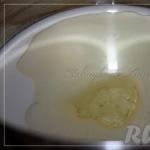When carrying out excavation work, it is necessary to arrange for fastening the walls of trenches and pits to prevent soil shedding. The walls are usually secured with shields with spacers, which are placed along the length of the trench at least every 2 meters at a depth of up to 3.75 meters in dry and loose soils and at least 1.5 meters in loose, wet and wet soils at a depth of more than 3. 75 meters. How are the walls of trenches and pits fastened in practice?
How should spacers be installed?
Height spacers (in tiers) should be placed at least every 1.2 meters at all depths, regardless of the nature of the soil. The presence of wall fastening elements imposes its own requirements on the width of the trenches. The width of the trenches should be divided by calculating the width of the base of the foundation, adding 15-20 centimeters on both sides for fastening. The width of trenches for pipelines is divided based on the width of the outer diameter of the pipes plus 0.6 meters for fastening.
Wooden or metal shields
Shields used to secure soil in trenches and pits are made of wood or metal. For loose and floating soils, solid panels are used, and for dense soils in trenches up to 3 meters deep, panels can be assembled with gaps from boards up to 200 millimeters wide. In this case, the width of the gaps between the boards of the shield should not exceed the width of the boards themselves.
To fasten the walls of medium-width trenches, inventory tools can be used metal fastenings staircase type. Inventory fastenings from steel pipes made in trenches with vertical walls 0.8-1.8 meters wide, using pipes with a diameter of about 60 millimeters and a length of up to 3 meters (for longitudinal elements of ladder fastening).
Cross braces inventory fastenings have threaded sections, by turning the screws on which you can increase the length of the spacers, thereby pressing the racks to the panels. Although inventory fasteners cost more than timber fasteners, they pay for themselves in the long run due to their multiple uses.
Tongue and tongue fastening of walls
In both loose and fluid soils (quicksands), the walls of trenches and pits are fastened with a sheet pile row, which is a continuous fastening of lighthouse piles and sheet piling boards. tongue and groove fastening It also serves as a fence for drainage work.
The structure of a wooden sheet piling row is as follows: screw piles are driven in, guide boards are attached to them, between which the sheet piling is driven. Completely packed spans are fastened at the top special nozzle, which has grooves with sockets.
The nozzle is attached to the piles with brackets. To prevent the earth from destroying the sheet pile row in the trenches with a double-sided device, spacers are made in the places where the sheet piles are driven. Metal and reinforced concrete sheet piles are also used in construction, the design of which differs from wooden ones only in the manufacturing technology.
With a one-sided sheet pile row, struts are installed in the pit, and in the pits, spacers are placed in the direction perpendicular to the sheet pile row. A sheet pile row can be constructed as a permanent fence or as a temporary one.
Driving lighthouse piles
When installing sheet piling fencing, the most labor-intensive work is driving the lighthouse piles and the sheet piling itself. If the amount of work is insignificant and the sheet piling row is driven in light soils, then it is advisable to use simple devices, for example a tripod. The tripod is arranged as follows: a metal hammer - “baba” weighing 200-250 kg on a cable with a folding hook is suspended on a block through which the cable passes to the winch. As a result of the rotation of the winch, the woman rises up to a height of 0.5-1 meters.
When the winch drum moves back freely, it falls down and clogs the sheet pile or pile with its weight. For small volumes of work, simple wooden or rolled steel pile drivers are used, equipped with hand winches and a head weighing up to 1 ton.
Mechanical pile drivers
For large volumes of piling work, mechanical pile drivers are used, which include those operating with compressed air hammers and diesel hammers. They operate on the same principle; they are struck by the free fall force of a hammer or the pressure force of compressed air. Using mechanized pile drivers, a pile can be driven to a depth of 6-8 m in 10-15 minutes, which significantly speeds up the construction of sheet pile rows for fastening the walls of trenches and pits in comparison with manual installation of sheet pile rows.
Scope of work: 1. Installation and dismantling of trench fastenings with inventory panels.
Meter: 100 m2 mounts
Fastening the walls of trenches up to 2 m wide in soils with inventory panels:
1-171-1 unstable and wet
1-171-2 stable
Table 311- Group 171 Standards 1 to 2
| Resource code | Resource name | Unit of measurement | 1-171 | 1-171 |
| man-hour | 44,2 | 34,34 | ||
| Average level of work | 2,9 | |||
| Driver labor costs | man-hour | 2,07 | 2,07 | |
| Machines and mechanisms | ||||
| 200-0002 | mash-h | 2,07 | 2,07 | |
| Materials | ||||
| 121-0757 | Separate structural elements buildings and structures [columns, | T | 0,011 | 0,011 |
| beams, trusses, braces, crossbars, racks, etc.] with a predominance of hot-rolled | ||||
| profiles, average mass of an assembly unit over 0.5 to 1.0 t | ||||
| 123-0509-U | Planed inventory formwork panel, thickness 120 mm | m2 |
Group 172 Fastening the walls of pits and trenches with boards
Scope of work: 1. Fastening the walls of pits and trenches with boards, cleaning the walls and preparing fasteners. 2. Dismantling the fasteners.
Meter: 100 m2 mounts
Fastening with boards the walls of pits and trenches more than 2 m wide, up to 3 m deep, in soils:
1-172-1 unstable
1-172-2 stable
1-172-3 wet
The same, more than 3 m deep, in soils:
1-172-4 unstable
1-172-5 stable
1-172-6 wet
Table 312- Group 172 Standards 1 to 3
| Resource code | Resource name | Unit of measurement | 1-172 | 1-172 | 1-172 |
| Labor costs of construction workers | man-hour | 66,64 | 42,33 | 85,17 | |
| Average level of work | 2,9 | 2,9 | 2,9 | ||
| Driver labor costs | man-hour | 3,04 | 2,24 | 3,16 | |
| Machines and mechanisms | |||||
| 200-0002 | Flatbed vehicles, load capacity up to 5 tons | mash-h | 3,04 | 2,24 | 3,16 |
| Materials | |||||
| 111-0179 | T | 0,0039 | 0,0039 | 0,0039 | |
| 112-0020 | m3 | 0,43 | 0,43 | 0,46 | |
| 112-0082 | m3 | 1,61 | 0,95 | 1,61 | |
| thickness 44 mm or more grade IV |
Table 313- Group 172 Standards 4 to 6
| Resource code | Resource name | Unit of measurement | 1-172 | 1-172 | 1-172 |
| Labor costs of construction workers | man-hour | 110,16 | 88,4 | 139,74 | |
| Average level of work | 3,3 | 3,3 | 3,3 | ||
| Driver labor costs | man-hour | 3,37 | 3,08 | 3,16 | |
| Machines and mechanisms | |||||
| 200-0002 | Flatbed vehicles, load capacity up to 5 tons | mash-h | 3,37 | 3,08 | 3,16 |
| Materials | |||||
| 111-0179 | Construction nails with flat head 1.6x50 mm | T | 0,0039 | 0,0039 | 0,0039 |
| 112-0020 | Round birch and soft hardwood timber | m3 | 0,46 | 0,46 | 0,46 |
| for construction, length 4-6.5 m, diameter 12-24 cm | |||||
| 112-0082 | Unedged boards from coniferous species, length 4-6.5 m, all widths, | m3 | 1,23 | 0,79 | 1,23 |
| thickness 44 mm or more, grade IV |
Group 173 Drainage
Scope of work: 1. Drainage from pits with an area of up to 30 m 2. Drainage from trenches with a width along the bottom of up to 2 m for strip foundations for buildings and structures, as well as for intra-factory and yard [intra-block] communications.
Meter: 100 m3 wet soil
1-173-1 Drainage from trenches
1-173-2 Drainage from pits
Table 314- Group 173 Standards 1 to 2
Development of seasonally frozen soils
Group 187 Snow removal from construction sites and roads
Scope of work: 1.Snow removal using mechanisms. 2.0 manual cleaning of places inaccessible to machinery, with snow being thrown over a distance of up to 3 m, or loading onto vehicles[norms 5,6].
Meter: 1000 m3 snow
Snow removal from construction sites and roads:
1-187-1 rotary auger snow blowers
1-187-2 snow plows on a tractor
1-187-3 bulldozers moving a distance of up to 20 m
1-187-4 with bulldozers moving every next 10 m, over 20
1-187-5 manually, loose snow
1-187-6 manually, dense snow
Table 315 - Group 187 Standards 1 to 3
| Resource code | Resource name | Unit of measurement | 1-187 | 1-187 | 1-187 |
| Labor costs of construction workers | man-hour | - | 0,37 | - | |
| Average level of work | - | - | |||
| Driver labor costs | man-hour | 1,11 | 0,74 | 3,57 | |
| Machines and mechanisms | |||||
| 201-0312 | Crawler tractors, power 79 kW | mash-h | - | 0,37 | - |
| 207-0149 | Bulldozers, power 79 kW | mash-h | - | - | 3,57 |
| 212-1901 | Snow plows on a car plow | mash-h | - | 0,37 | - |
| 212-1902 | Snow blowers on a vehicle, rotary augers | mash-h | 1,11 | - | - |
Table 316- Group 187 Standards 4 to 6
Safe to carry out earthworks possible with the help special installations- supports for trenches. These devices serve as a kind of formwork for ground walls, which protects not only the employees inside, but also all nearby structures. It is beneficial to use inventory supports when digging pits, shafts and trenches, as well as when laying communications using the trenchless method.
You can buy trench supports in St. Petersburg from Sirius LLC, a leading manufacturer of construction formwork in the region. You can order the production of similar systems from us for depths in the range of 3-8 m. The production time of the structure takes from 2 to 20 days and depends on its type. To get acquainted with the range of trench supports and their prices, call us at the numbers listed on the website.
| Name | Dimensions | Weight | Production time |
| Trench supports for depth | |||
| "SIRIUS-N" 2.4X3.5 | 2.4x3.5x0.08; 2.4x3.5x0.065 | 850 | 2 days |
| "SIRIUS N" | 2.4x3.0x0.08; 2.4x4.0x0.08 | 800 | 2 days |
| Trench supports for depth | |||
| "SIRIUS N" 2 TO 5 METERS | 2.4 + 2.4x3.0; 2.4 + 2.4x3.5 | 3500 | 10 days |
| "SIRIUS N 2" | 2.4x3.0x0.08; 2.4x3.5x0.08 | 1800 | 5 days |
| "SIRIUS N" 2 TO 4 METERS | 2.4 + 1.6x3.0; 2.4+ 1.6x3.5 | 2800 | 8 days |
| Trench supports for depth | |||
| "SIRIUS N 3" | 6.4x3.0x0.08; 6.4x3.5x0.08 | 5500 | 20 days |
| Trench supports for depth | |||
| "SIRIUS-EATON" C | 6.4×3.0x0.065 | — | 10 days |
| "SIRIUS-EATON" B | 4.8×3.0x0.065 | — | 8 days |
| "SIRIUS-EATON" A | 2.4×3.0x0.065 | 1600 | 5 days |
When is trench support required?
The implementation of ground work requires the use of professional earth-moving equipment. On the other hand, its use causes a number of inconveniences. For example, it is necessary to increase the width of the trench several times. As a result, you need to remove a lot of soil, purchase more aggregate, and waste valuable time. You can avoid trouble by installing trench support.
Also, this shield device brings the owner a number of undeniable advantages:
- Strengthening the soil takes a minimum of time. The support has simple design, so the assembly of its camera, installation and dismantling are quick.
- Adequate level of security. Workers feel completely safe while inside the trench. Landslides and soil shedding are excluded.
- Increased work productivity. The excavation will be reliably and efficiently strengthened, which means that all working equipment can be used to its full potential.
Another important bonus is cost savings. The use of support can significantly reduce the size of the trench. It turns out that it will be possible to reduce labor costs a large number employees, for rent additional equipment and related materials.
How to choose a suitable support?
It is better to buy trench support after the following aspects of the upcoming work have been clarified:
- soil type and condition;
- the structure of the territory where excavation work is planned;
- expected trench depth;
- specifics of activity.
Sirius LLC specialists will take into account all factors and offer effective option systems.
What does trench formwork look like?
The support for pits consists of several elements:
- shields - durable metal plates;
- guides - beams for fixing walls;
- spacer mechanisms - elements that hold the guides at the required distance and make the system rigid.
Request current price on trench support you can use special form on the website. Include your name, phone number and additional information. Our manager will contact you shortly.
  |

















